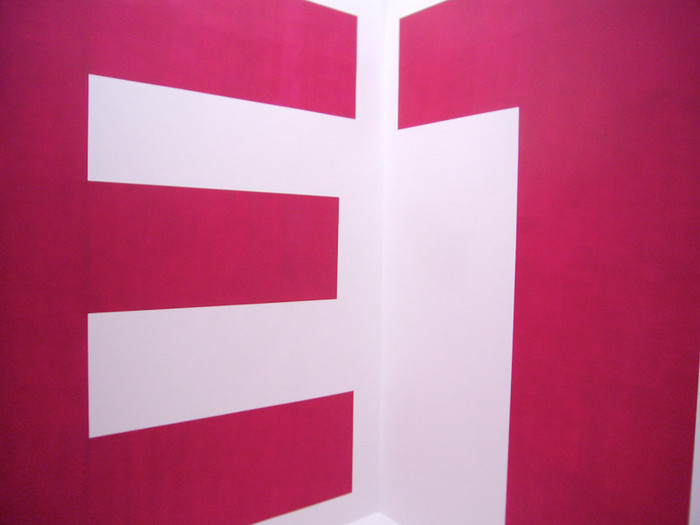Gracia Khouw
27 Mar - 19 Apr 2009
I paint sound. I enjoy stripping words of their intended meaning into tones that cause the air to vibrate, resonate and sing. Like deciphering signs in foreign lands. Sometimes I leave a space filled only by primeval sound bites or onomatopoeia; while at other times images arise -the consequence of letters voicing their free will. The absence of meaning and weightlessness of language challenges the manner in which we look at images and how we interpret them. Throughout our daily surroundings are a growing number of signboards that both aid and tempt to coerce us, from traffic signs and billboards in the street to menu bars and pop-ups on computer screens. Looking has become a cut and paste activity, your mind sorts endless fragments of visual information and compiles it at incredible speed. Painting is about observation, but looking at painting has not become any easier. Painting is a slow process as is watching a painting unfold. Still, it is in this tradition I choose to work. Why should anyone still be making paintings or even wanting to look at them? Because when looking at painting a particular perception of time and space develops that doesn’t exist in other media. It has to do with complexity and especially: the process of capturing and expressing this intricacy in a clear-cut way. Its depth can be compared to using hyperlinks, where every click takes you further to yet another classification or arrangement, but painting goes beyond what is possible on the Internet. Even more important than linking is the role the surface plays with our senses- the paint, its ’tactile-ness’. Paintings happen one at a time; how paint meets the canvas is not interchangeable or cannot be reproduced. Through the years the concentration it takes to paint has become increasingly important to me, a rebellion of sorts against a certain arbitrary and open-endedness in contemporary information flows. Today, the value of something one of a kind or the idea that things come to an end is not readily accepted. But, coupled with every moment is a unique time and place. For these reasons, I like to work on site-specific projects. I begin by studying the characteristics of the space. Every location is different, qua the influence of light, colour, material and construction. My findings decide the medium I will work with. A bomb shelter asks for a different solution than a historical square or chapel-like pavilion. I seek a translation where the location speaks for itself and in so doing distinguishes itself from others. If you listen carefully, what is it you hear – a soft buzz, low murmur, loud rattle? (TRANSLATION BY LESLIE ROBBINS)

